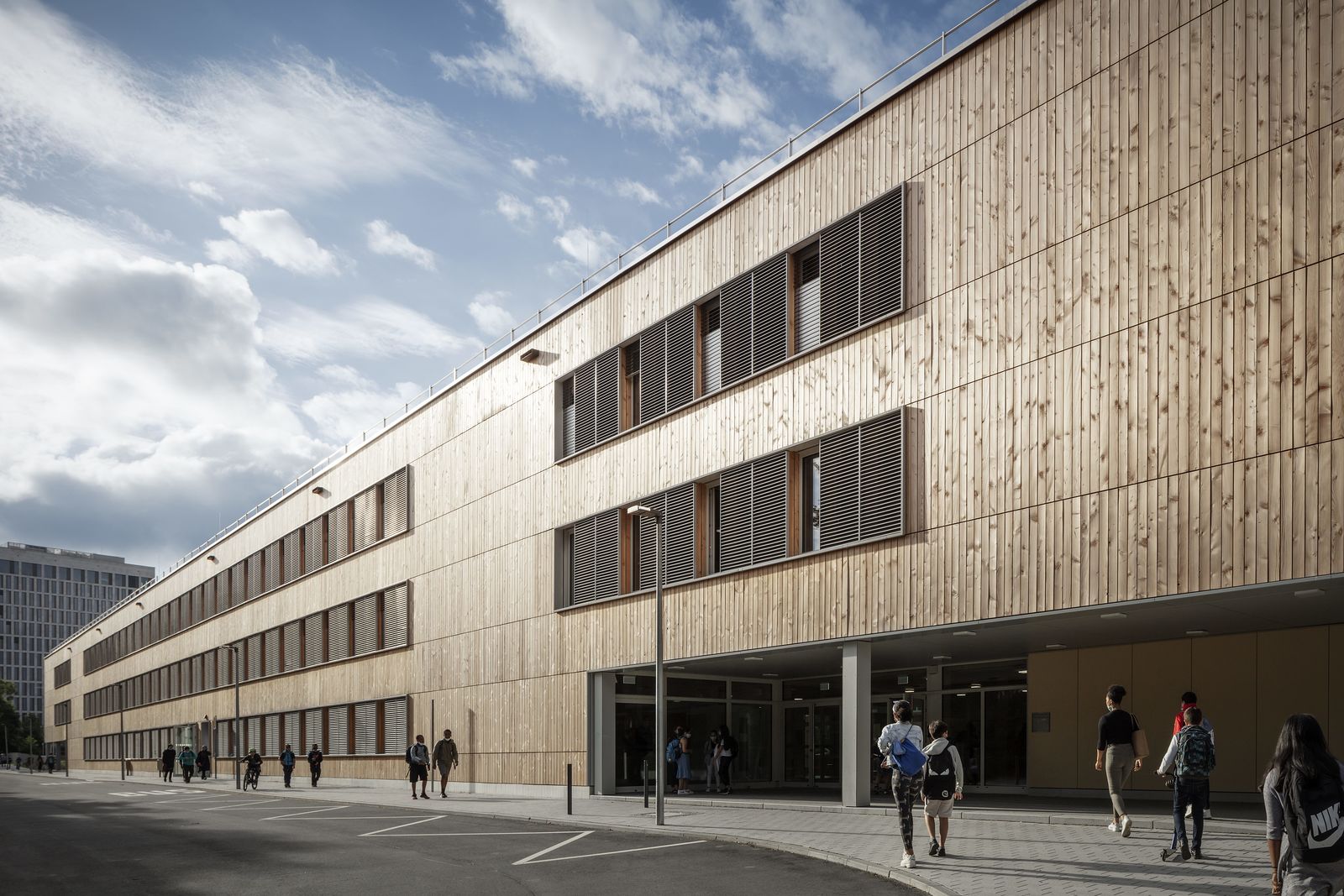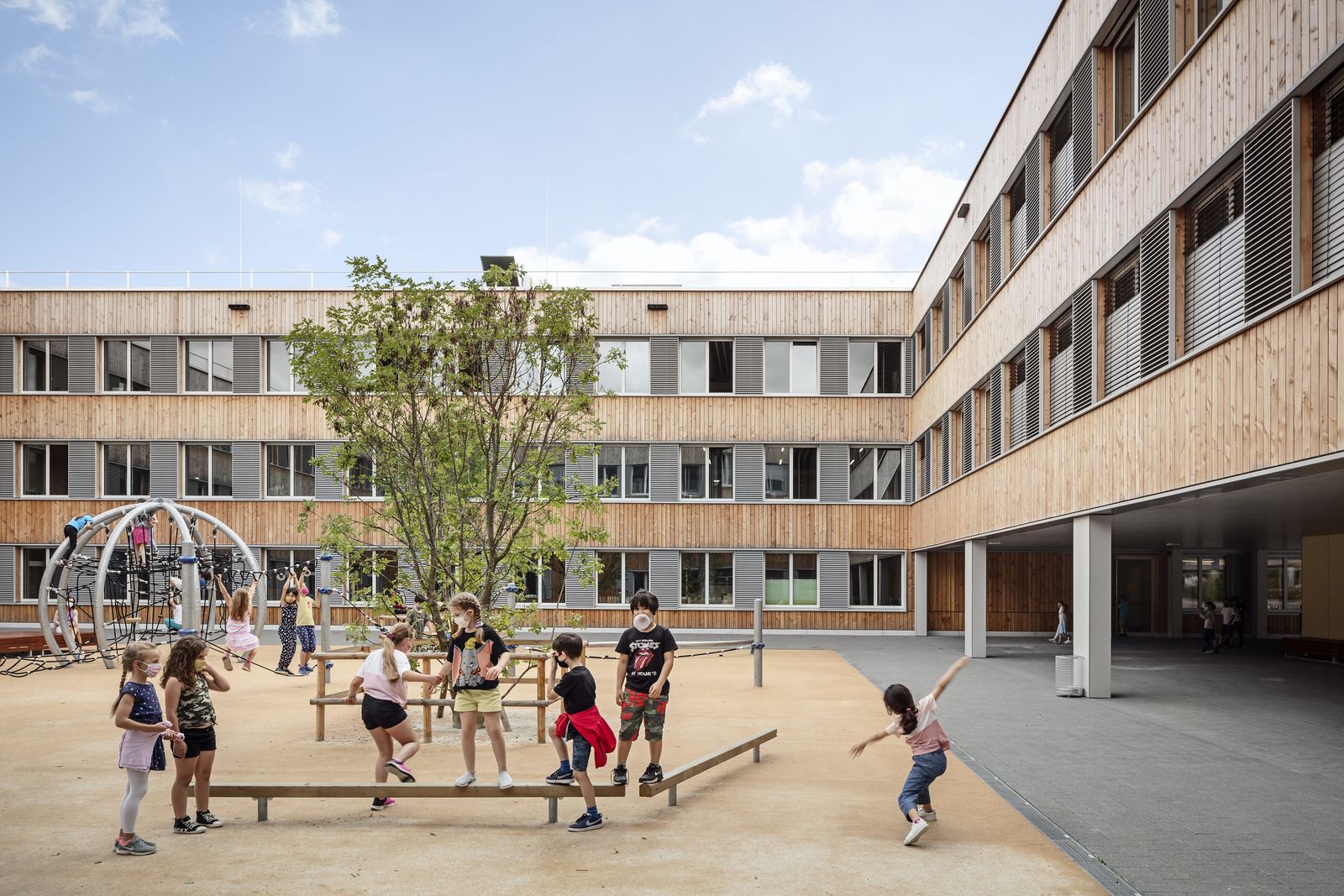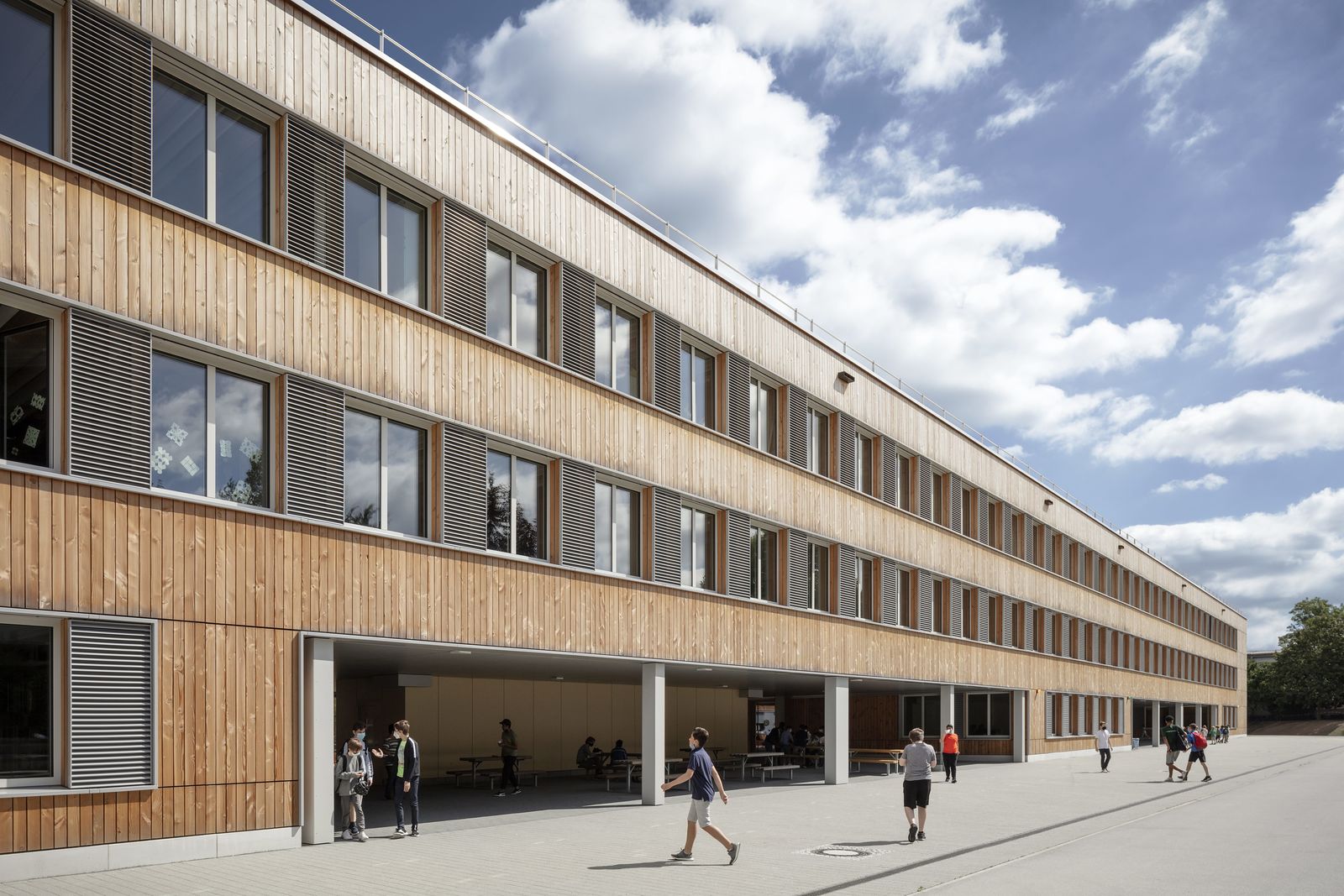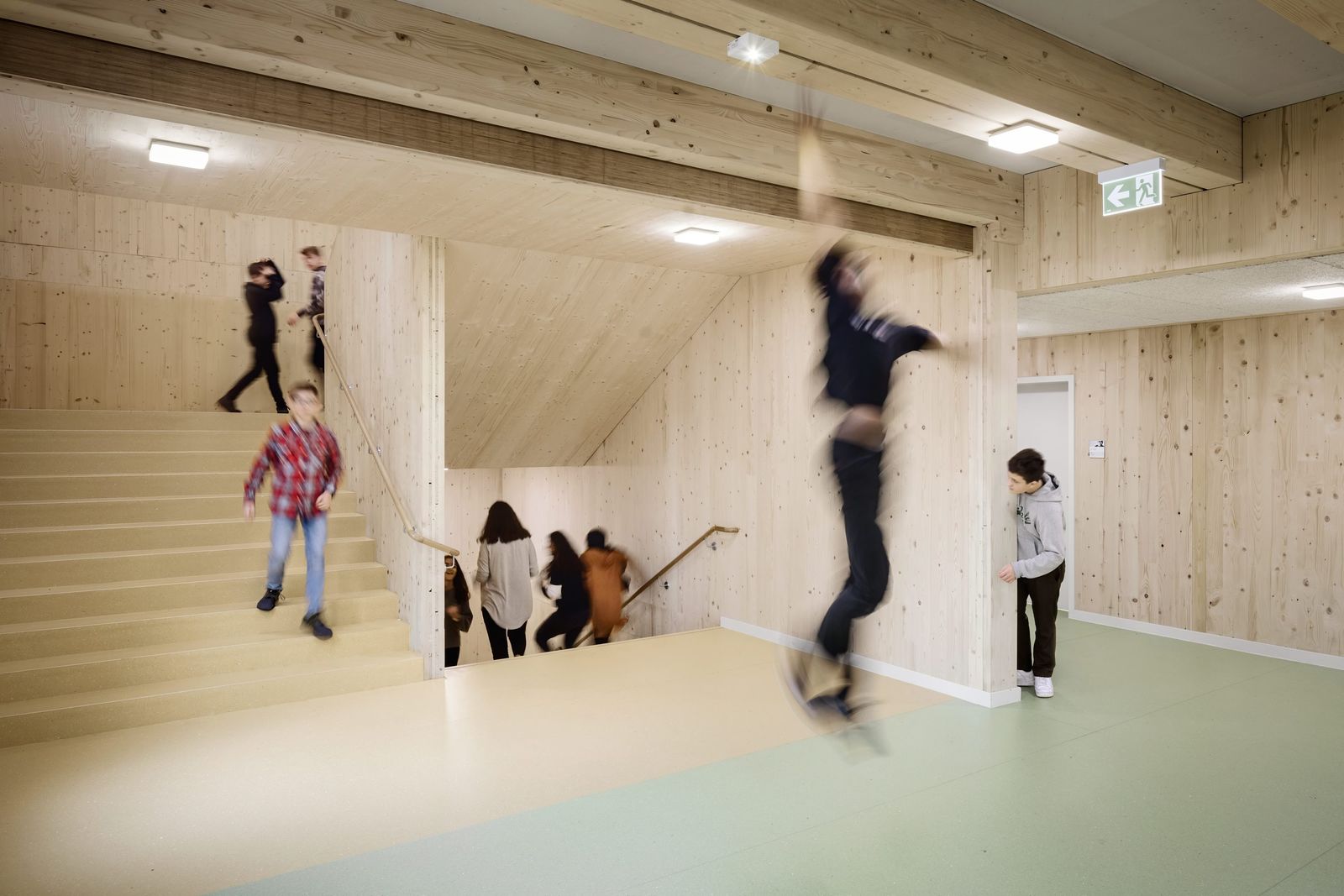Exhibition UMBAU. Nonstop Transformation // April 10 - May 5, 2025 - Jiushi Art Salon Shanghai
Temporary Quarters for 2,000 Pupils in Frankfurt am Main
With a steadily growing population, the need for new school buildings has risen sharply in Frankfurt am Main. The city relies on modular construction for expeditious and high-quality solutions that reduce the construction time by up to 60 percent compared to conventional building methods. On July 30, 2019, the topping-out ceremony for the Miquelallee school center was held at the construction site in Frankfurt’s Westend as school operations are poised to start for the 2019/20 school year, after a period of just 24 months for planning and implementation. The Adorno Gymnasium and the Holzhausenschule – an academic high school and an elementary school, respectively – will jointly occupy the facility, which is currently being assembled from roughly 350 prefabricated elements using modular wood construction according to a design by architects von Gerkan, Marg and Partners (gmp). The building is expected to be used as the schools’ temporary quarters for five to ten years, until their permanent location at the Westend school campus is completed. The architects’ design that prevailed in the VOF procedure, which regulates the procurement of professional services by public clients, also envisages that the modular building will be dismantled and rebuilt at another location.
The high school and the elementary school, each of which has six parallel classes per grade level, are consolidated in a three-story building with two internal courtyards for school recess activities. The building’s compact form responds to the relatively small site while offering an economical design with close proximities. Although conceived for temporary use, the building meets high energy standards: its consumption lies 30 percent below the values prescribed by the current Energy Saving Ordinance (EnEV).
The high school is located in the western part of the symmetrically designed complex, and the elementary school is in the eastern part. Both schools share the administrative offices on the ground floor of the building’s middle wing. The entrances at the northern corners of the building lead to the main circulation spine, which connects all the functional areas. The school cafeterias of both schools are also located here and share a common kitchen.
All classrooms are oriented to the quiet sides of the campus to the west and east, and especially to the landscaped courtyards, which individually form the spatial centers of the two schools and open outward to the south at the ground floor level. The school building’s wood material gives it a natural appearance, which is complemented on the inside by colored floors that vary from floor to floor, thus facilitating orientation and promoting pupils’ identification with their part of the building.
















